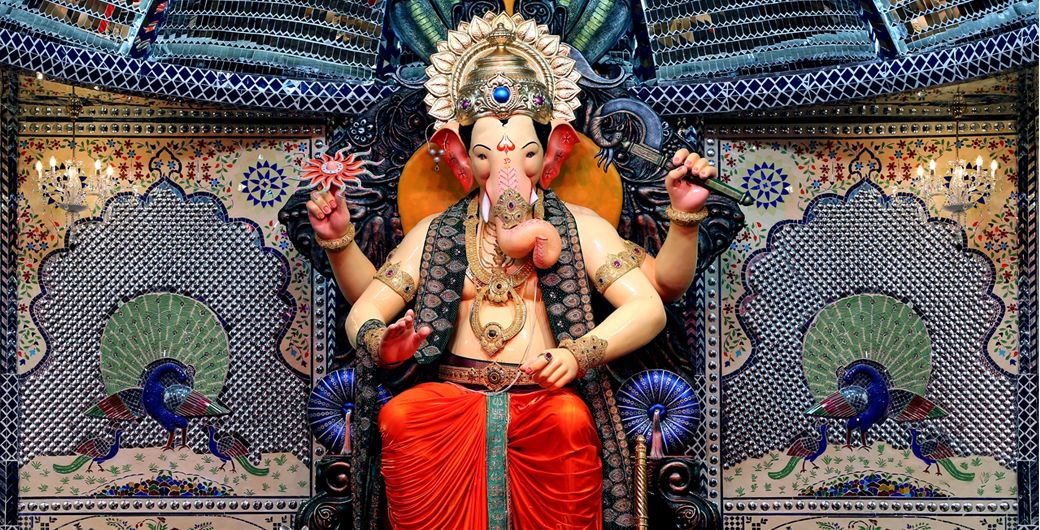Holi, the festival of colours, is not very far and it indeed makes March a colourful month. Most of us grew up playing Holi by filling small balloons with coloured water to be used as water cannons. The festive day is also celebrated with specially prepared. Did you know that there are several kinds of Holis that most of us are unaware about?
Lathmar Holi – Barsana village, Uttar Pradesh
Legend has it that Holi began in the Barsana region of India, which includes Vrindavan, Mathura, Nandgaon and Barsana. What is interesting is Holi here is celebrated with not just colors, but with lathis. As per tradition, women chase away the men with lathis. Yes a few affectionate blows do end up falling on the men but men come prepared too!
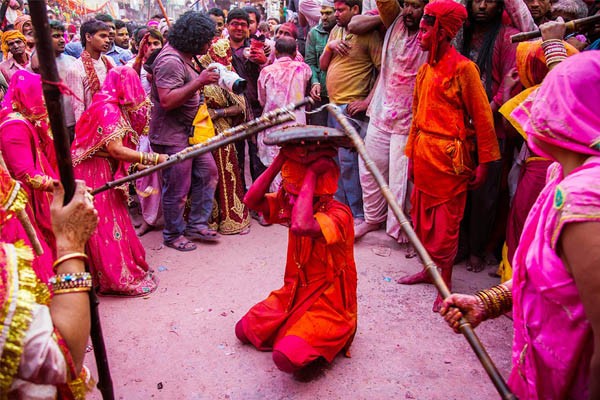
Khadi Holi – Kumaon region, Uttarakhand
Khadi Holi is celebrated in the Kumaon region which happens mainly in the town areas of Uttrakhand. On the day of Holi the locals wear traditional clothes, sing khari songs and dance in groups and greet the people they pass by. In this region, Holi is usually a musical gathering in different versions known as Baithika Holi, Khadi Holi and Mahila Holi.
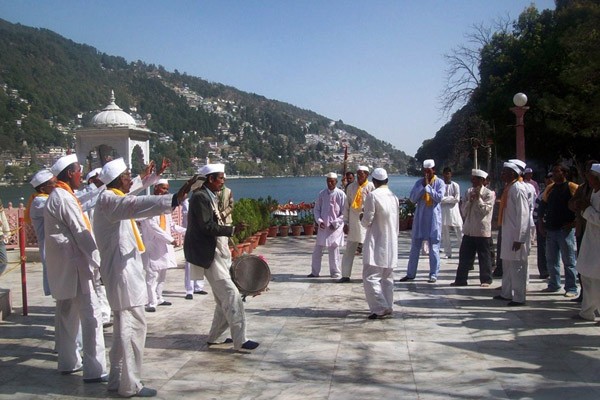
Manjal Kuli – Kerala
Although Holi originated in North India even then some communities in the southern part of the country celebrate Holi, having distinct traditions and names.
In Kerala, Holi is called Manjal Kuli and is celebrated in the Konkani temple of Gosripuram Thirumala.
Hola Mohalla – Punjab
In this part of India Hola Mohalla earned its claim to fame as it was a celebration of the warrior people of Punjab. This festival was pioneered by Nihang Sikhs. They display martial arts and sing their hearts out on this day, that is usually celebrated a day before Holi.
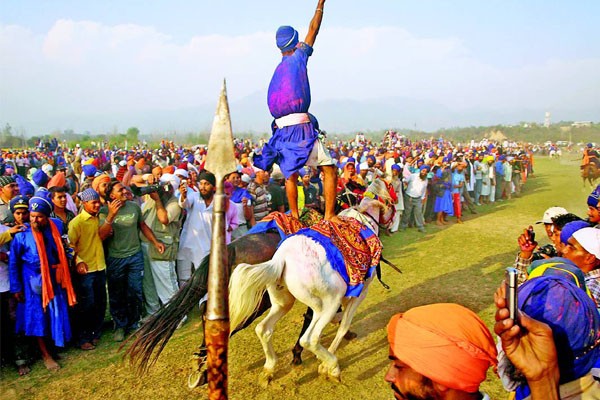
Basant Utsav and Dol Jatra- West Bengal
The Basant Utsav is a celebration to welcome the spring season. On this day, there is a special celebration at Shantiniketan. Boys and girls wear saffron coloured clothes, sing and dance to celebrate this festival. Interestingly, Dol Jatra is a part of the main Holi festivities. Dol Purnima is an occasion where processions carrying idols of Radha and Krishna can be seen on the streets. To add to the fun, men spray water and colours at this procession.
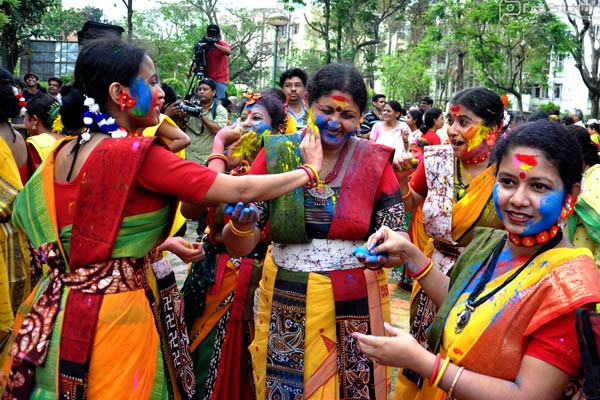
Shigmo – Goa
The Shigmo festival is the celebration of the onset of spring in Goa. It is one of the major festivals of Hindus. The celebration consists of traditional folk and street dances performed by farmers. Even tourists at Goa celebrate this festival with a lot of involvement.
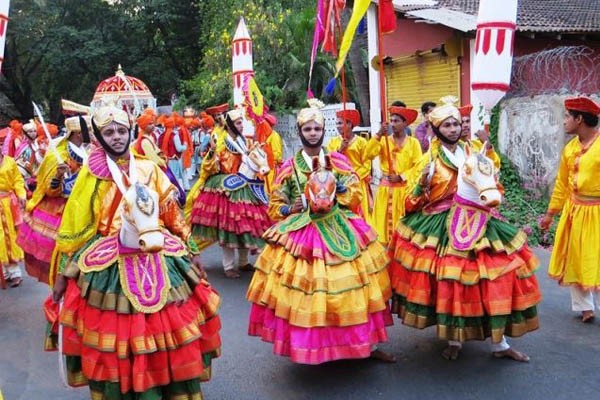
Yaosang – Manipur
In Manipur, Holi or Yaosang is celebrated for six days. It starts on the day of the full moon and combines Hindu and native traditions. The highpoint of the festival is the Thabal chongba, a Manipuri folk dance that is performed during the festive day .
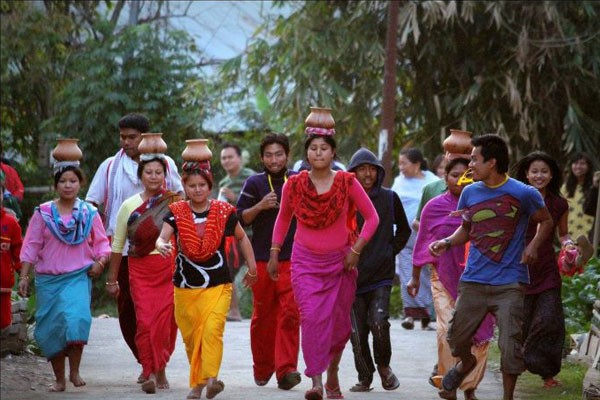
Phaguwa – Bihar
In Bihar Holi is the quintessential celebration of the masses. The festival is known as Phaguwa in the local Bhojpuri dialect and it involves the lighting up of the ‘Holika pyre’ before playing Holi. Post the burning ritual, Holi is celebrated with folk songs, water and powdered colors derived from organic sources.
‘Bhang’ which is a form of a Natural intoxicant is also consumed a part of the holi celebrations in the state.
Phakuwah – Assam
Holi goes by the name “Phagwah” in Assam. It is similar to Bengal’s ‘Dol Jatra’ except that it is celebrated for 2 continuous days. On the 1st day, clay huts are burnt as a ritualistic practice to hail Holika dahan. On the 2nd day, the locals celebrate it with colours just like the way it happens in other parts of India !

Royal Holi – Udaipur, Rajasthan
On the eve of Holi, locals light bonfires to signify the defeat of good over evil .
Udaipur’s Mewar royal family celebrates holy in the most amazing manner as it involves fancy procession consisting of decorated horses and the celebration ends by lighting the traditional sacred fire and an effigy of Holika is burnt.




